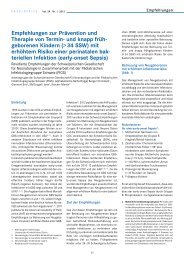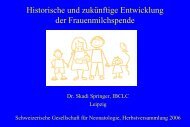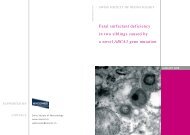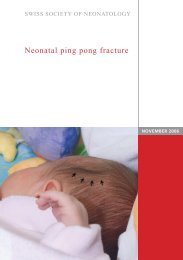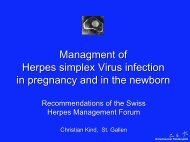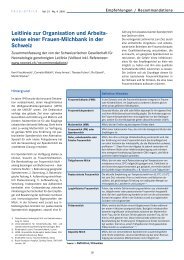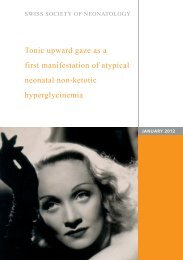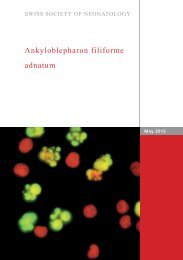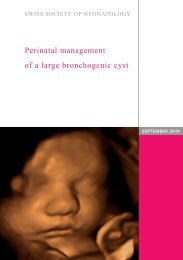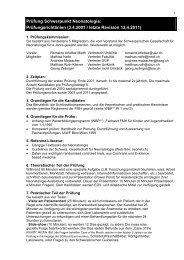Congenital hyperinsulinism - Swiss Society of Neonatology
Congenital hyperinsulinism - Swiss Society of Neonatology
Congenital hyperinsulinism - Swiss Society of Neonatology
You also want an ePaper? Increase the reach of your titles
YUMPU automatically turns print PDFs into web optimized ePapers that Google loves.
DISCUSSION<br />
12<br />
Hyperinsulinemic hypoglycemia (HH) occurs as a conse-<br />
quence <strong>of</strong> unregulated insulin secretion from pancreatic<br />
ß cells. This is the major cause <strong>of</strong> persistent and recurrent<br />
hypoglycemia in the neonatal and infancy period. Rapid<br />
diagnosis and appropriate management <strong>of</strong> these patients<br />
is essential to prevent brain injury, as HH is associated<br />
with a high risk <strong>of</strong> epilepsy, cerebral palsy and neurological<br />
handicap. Inappropriate insulin secretion drives glucose<br />
into insulin-sensitive tissues (such as skeletal muscle,<br />
adipose tissue and the liver) and simultaneously inhibits<br />
glucose production via glycolysis and gluconeogenesis,<br />
suppresses fatty acid release and ketone body synthesis<br />
(i.e., inhibition <strong>of</strong> lipolysis and ketogenesis). This metabolic<br />
„footprint“ <strong>of</strong> insulin action (hypoglycemia with inappropriately<br />
low fatty acid and ketone body formation)<br />
explains why patients with HH have an increased risk <strong>of</strong><br />
brain injury. The brain is not only deprived <strong>of</strong> its most important<br />
substrate (i.e., glucose) but also ketone bodies,<br />
which form an alternative source <strong>of</strong> fuel (1).<br />
HH may be congenital (CHI, congenital <strong>hyperinsulinism</strong>),<br />
secondary to certain risk factors (such as maternal diabetes,<br />
perinatal asphyxia or intrauterine growth restriction)<br />
or it can be associated with developmental syndromes<br />
(such as Beckwith-Wiedemann syndrome).<br />
CHI is a genetically heterogeneous disease with muta-<br />
tions having been described in 8 different genes (ABCC8,<br />
KCNJ11, GLUD1, GCK, HADH, HNF4A, UCP2 and SL-<br />
C16A1) (2, 3). Although dominant mutations have been



